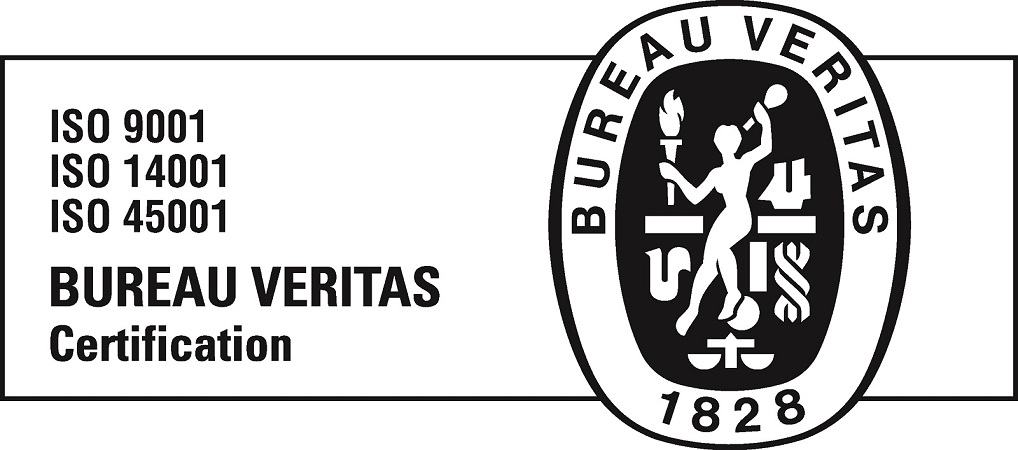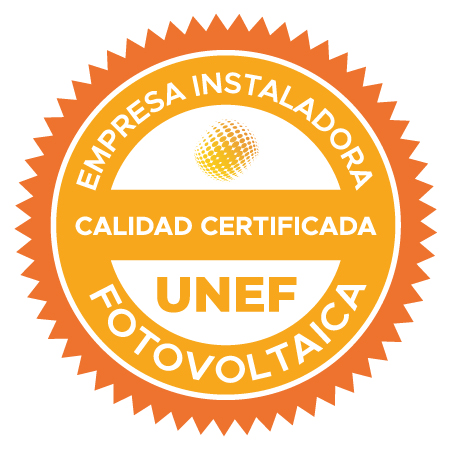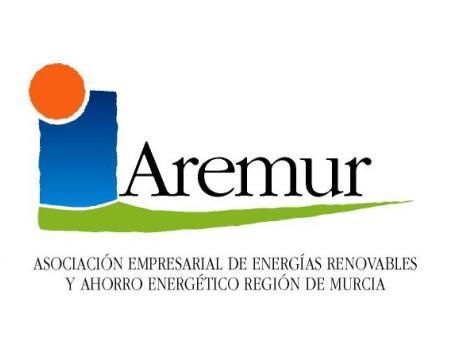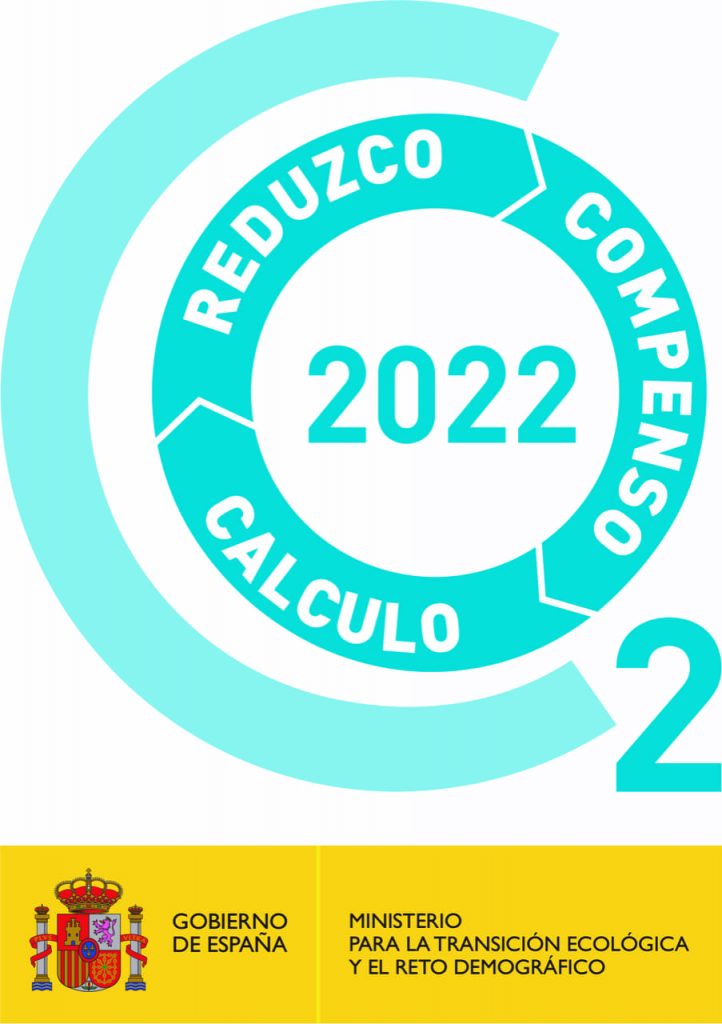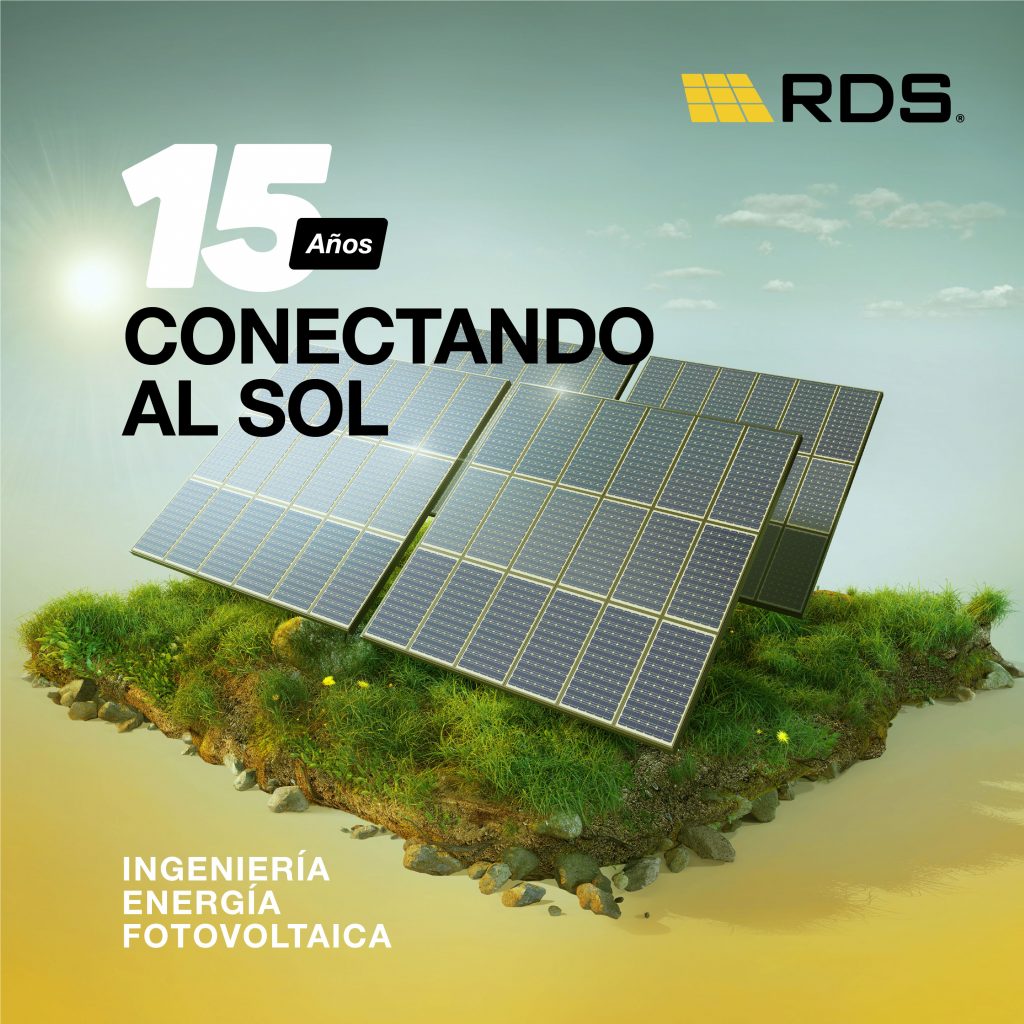In 2023, the PV industry will experience a number of trends in areas such as self-consumption, technology, security and energy efficiency. Electrification of the energy system is expected to accelerate with the implementation of aerothermal and geothermal energy, as well as the adoption of the electric car. In addition, larger solar panels and lithium battery storage systems are expected to be used.
Free and non-binding personalised study
Before installing solar panels, it is important to carry out a preliminary study of the photovoltaic installation. This personalised study will allow us to know the characteristics and energy needs of each company, ensuring an optimal installation and avoiding possible errors.
Why a preliminary study of the photovoltaic installation is important
A preliminary study of the photovoltaic installation is important to determine aspects such as the location and orientation of the panels, the power required, the availability of space and compatibility with the electricity grid. This will ensure that the installation is efficient and adapted to the energy needs of each company.
How to get a free personalised study
There are numerous companies specialising in solar panels that offer free, no-obligation customised studies. To obtain a customised study, it is only necessary to contact the company and provide information about the company’s energy consumption and the location of the installation.
What information is needed to request a personalised study
- Electricity consumption: it is necessary to know the company’s electricity consumption in order to determine the required power of the solar panels.
- Location: to determine the optimal orientation and inclination of the solar panels.
- Size of the installation: to know the number of panels needed and the space available for installation.
- Type of roof: knowing the type of roof will help to know the installation possibilities and the type of fixing of the panels.
- Interest in self-consumption: it may be necessary to know if there is interest in the installation of a self-consumption electricity system.
Solar kits for self-consumption
Self-consumption solar kits are an increasingly popular option for consumers looking to reduce their electricity consumption from the grid and take advantage of solar energy. In this section, we will talk about what solar kits are, their advantages and disadvantages and how to choose the most suitable solar kit for your consumption.
What are solar kits and how do they work?
A solar kit for self-consumption is a photovoltaic solar energy system that allows electricity to be generated from solar radiation and consumed on-site. The solar kits consist of solar panels, inverter, battery and mounting elements. Solar panels capture solar energy and transform it into continuous electrical energy, which is stored in a battery. The inverter converts direct electrical energy into alternating electrical energy, which is used by consumers. In short, solar kits for self-consumption use solar energy to generate electricity and reduce the consumption of electricity from the grid.
Advantages and disadvantages of solar kits
Advantages:
- Reduced electricity bills: solar kits allow you to reduce your electricity consumption from the conventional electricity grid and generate electricity from solar energy.
- Energy independence: by generating their own electricity, consumers can be more independent from the conventional electricity grid and reduce their dependence on fossil fuels.
- Contribution to the reduction of greenhouse gas emissions: electricity generation from solar energy produces less greenhouse gas emissions than conventional electricity generation from fossil fuels.
Disadvantages:
- High initial cost: solar kits for self-consumption require an initial investment that can be high.
- Dependence on solar radiation: electricity generation from solar energy is dependent on solar radiation, so during the night or on cloudy days electricity production will be reduced.
- Space constraints: Solar kits require an adequate installation surface, so they are not always a viable solution in every home or business.
How to choose the most suitable solar kit for your consumption
In order to choose the most suitable solar kit for your consumption, it is important to consider several factors:
- Electricity consumption: it is essential to know the company’s electricity consumption in order to correctly size the photovoltaic system.
- Location and orientation: The location and orientation of the solar panels is key to obtaining good solar energy production.
- Budget: The available budget is another important factor to consider when choosing the most suitable solar kit.
- Warranties and technical support: It is important to choose a supplier that offers a warranty on the equipment and technical support in case of breakdowns or problems.
Ayudas y subvenciones
In order to promote the installation of solar panels, there are various subsidies and grants available at national and regional level:
What subsidies and grants are currently available for the installation of solar panels?
- Aid programme for energy efficiency actions in SMEs and large companies in the industrial sector.
- Aid programme for energy efficiency actions in the services sector and in the agricultural sector.
- Aid for energy saving and efficiency actions in the transport sector.
- Aid programme for carrying out energy audits in SMEs and large companies.
Eligibility criteria for grants and subsidies
To be eligible for these grants and subsidies, it is necessary to meet a series of requirements, such as, for example:
- The typology of beneficiaries.
- Minimal energy consumption.
- Not having started the works prior to the registration in the aid programme.
How to apply for grants and subsidies
It is important to mention that the process for applying for these grants and subsidies varies depending on the autonomous community where the installation takes place. However, the procedures usually include online applications with the company’s or plant owner’s tax identification number, submission of documentation and accreditations, as well as waiting for confirmation and acceptance of the aid or subsidy.
Comments
In this section, we collect the opinions of experts in the photovoltaic industry, the experiences of users with photovoltaic installations and the frequently asked questions that users have regarding the installation of solar panels.
Views of experts in the photovoltaic industry on the trends
- Experts indicate that industrial self-consumption will continue to grow in 2023 due to the decreasing cost of solar energy and the rising cost of electricity on the grid.
- In addition, further deployment of distributed solar power is expected in many established markets and investment in the modernisation and digitisation of electricity grids.
User experiences with photovoltaic installations
- Users who have installed solar panels in their businesses claim to have significantly reduced their electricity consumption from the grid and thus saved on their electricity bills.
- In addition, users stress the importance of having a properly designed photovoltaic installation carried out by professionals specialised in the field.
Frequently asked questions from users regarding solar panel installation
Why a preliminary study of the photovoltaic installation is important
- A prior study of the photovoltaic installation allows the appropriate system to be sized to meet the consumption needs of each user, taking into account variables such as geographical location, the slope of the roof and the electrical power required.
- In addition, cost savings can be achieved by sizing the system correctly and choosing the right components.
How to get a free personalised study
- To obtain a free personalised study, you should look for companies specialised in photovoltaic installations and request a preliminary study of the installation in question.
- It is important to compare various options and ensure that the company has a track record and experience in the field.
How to choose the most suitable solar kit for your consumption
- In order to choose the most suitable solar kit for consumption, it is important to consider the electrical power needed and the number of solar panels required to cover this power.
- It is also important to consider the quality of the components that are part of the solar kit and to choose a suitable battery storage system.
What subsidies and grants are currently available for the installation of solar panels?
- There are currently various grants and subsidies available at both state and regional level for the installation of solar panels.
- Among the aids, subsidies for the purchase of electric vehicles and aid for investment in renewable energies stand out.
Eligibility criteria for grants and subsidies
- The requirements to be eligible for grants and subsidies vary depending on the autonomous community or entity offering them.
- In general, it will be required to have an adequately dimensioned installation carried out by qualified professionals and to comply with the administrative requirements for the application for aid or subsidy.
How to apply for grants and subsidies
- In order to apply for grants and subsidies, it is important to be informed in advance about the calls for applications in force and to follow the administrative steps established in each case.
- In many cases, specific documentation and application deadlines will be required.
How photovoltaic installations can help electric mobility
- Photovoltaic installations can contribute to electric mobility by generating solar energy that can be stored in batteries and used to recharge electric vehicles.
- In addition, the installation of electric vehicle charging points in neighbourhood communities can encourage self-consumption and the generation of clean energy.
Energy storage trends in the PV industry 2023
- An upward trend is expected in the development of increasingly efficient and less costly energy storage systems, allowing for greater autonomy and the use of solar energy produced during off-peak hours.
- In addition, the lithium battery is expected to be increasingly used as an energy storage system in photovoltaic systems.
Electric mobility
Electric mobility is one of the trends in the PV industry for 2023. In this respect, the adoption of electric cars is expected to increase. The implementation of electric vehicle charging points in neighbourhood communities is one of the most important initiatives to promote electric mobility.
Charging points for electric vehicles in residential communities
In neighbourhood communities, the installation of electric vehicle charging points can be a very cost-effective initiative. It can also contribute to reducing the environmental impact and improving the quality of life of neighbours. It is important to take into account some aspects for their installation, such as the location of the charging points and the electrical charging capacity of the community.
How photovoltaic installations can help electric mobility
The installation of solar panels can be a good option to provide renewable energy to electric vehicle charging points, which can result in cost savings and reduced dependence on the grid. In addition, the self-consumption of energy with solar energy in companies can guarantee greater electrical autonomy for the electric vehicles used in these companies.
Distributed solar energy
Distributed solar energy is a system for the production and distribution of electrical energy, which consists of the generation of electrical energy in small production units distributed throughout the territory. The energy produced by these units can be used directly at the site where it is produced or distributed through the distribution grid for use by businesses. It is an interesting and sustainable alternative to centralised power generation, reducing greenhouse gas emissions and improving energy efficiency.
What is distributed solar energy and how does it work?
Distributed solar energy is produced by photovoltaic solar panels installed on the roofs of buildings, on facades or in other spaces, and is used to cover the energy needs of businesses. The energy produced by these panels is fed into the grid and distributed to the different consumption points through the distribution network.
This system has a great advantage, as it allows decentralised power generation without the need for large power plants, which reduces power transmission losses and makes it more efficient. In addition, by being installed at the place where the electricity is consumed, it avoids the energy loss that occurs in distribution and reduces the need to transport electricity over long distances.
How distributed solar energy can be a mainstream electricity supply option
Distributed solar power can be a mainstream electricity supply option in many established markets. This is because the cost of producing distributed solar power continues to fall, while the cost of electricity from fossil fuels remains high.
In addition, distributed solar energy can be particularly attractive for businesses and local communities seeking to reduce their environmental impact and improve energy efficiency. Distributed solar power is a sustainable option for electricity production, and allows businesses and communities to have a clean, renewable energy source, reducing their dependence on fossil fuels.
PV industry trends 2023 for distributed solar power
- Distributed solar power will be extended to new consumer segments, such as small and medium-sized enterprises.
- The cost of producing distributed solar power will continue to fall, making it an increasingly attractive alternative in terms of cost.
- Distributed solar energy production technology will continue to advance, allowing for greater efficiency in electricity production.
- Distributed solar energy management and monitoring systems will be implemented to enable more efficient and secure management of distributed solar energy.
- The development of more efficient energy storage systems will be encouraged to cope with the intermittency of solar energy.
Energy storage
Energy storage is a key issue in the photovoltaic industry. Solar panels generate electricity when the sun is shining, which means that at night or on cloudy days other energy supply options will have to be used. In this sense, energy storage capacity is essential, as it will allow energy demand to be covered at times when electricity generation is not sufficient.
How solar energy is stored
There are different types of energy storage systems for solar energy:
- Lithium-ion batteries: these are the most common and widely used today. They have a high storage capacity and high energy efficiency.
- Lead-acid batteries: are cheaper but also have lower energy efficiency and shorter life than lithium-ion batteries.
- Thermal storage systems: these are used in solar concentration installations, where solar energy is concentrated on a receiver and then stored in a thermal fluid. These systems are more suitable for large installations and less suitable for residential applications.
Types of energy storage systems
Other types of energy storage systems being researched and developed include:
- Flow batteries: allow large amounts of energy to be stored and are well suited for integration into renewable energy systems.
- Hydrogen storage: this involves storing solar energy in the form of hydrogen, which can then be used to generate electricity or for use in fuel cell vehicles. Although it is a developing technology, its potential is very high.
- Supercapacitors: they allow very fast storage of electrical energy, which makes them suitable for peak demand and fast charging of electric vehicles.
Energy storage trends in the PV industry 2023
Demand for lithium-ion batteries in the PV industry is expected to continue in 2023. However, there is also expected to be a trend towards more efficient and sustainable energy storage systems, allowing users to increase their degree of self-consumption and decrease their environmental impact.
The use of hydrogen as a form of energy storage is also expected to be further explored and developed in the PV industry. The use of these technologies will allow solar energy to become a more reliable energy source capable of meeting all energy needs.
Security and energy efficiency
Safety in photovoltaic installations is a key aspect to ensure their correct operation and to avoid risks and accidents. Some important questions on this issue are detailed below:
Importance of safety in photovoltaic installations
- It is important to have specialised and qualified personnel for the installation and maintenance of solar panels to ensure the safety of the installation.
- Special attention must be paid to the correct connection of the different elements that make up the photovoltaic installation, as well as to the correct fixing of the solar panels to avoid damage or detachment.
- Another important aspect is overload protection, which must be present in all components of the installation.
- In the case of grid-connected photovoltaic systems, it is necessary to comply with the applicable standards and regulations to ensure the safe connection and disconnection of the system to the grid.
How to increase the energy efficiency of photovoltaic installations
In order to increase the energy efficiency of photovoltaic installations, the following recommendations can be taken into account:
- Correctly position the solar panels to make the most of solar radiation and avoid shadows that reduce the efficiency of the installation.
- Use high-efficiency inverters to reduce energy losses in the conversion from direct current to alternating current.
- Implement solar tracking systems to maximise the energy efficiency of the installation.
- Perform regular maintenance and cleaning of the solar panels to avoid accumulation of dirt that reduces their efficiency.
Trends in the photovoltaic industry 2023 in terms of energy security and efficiency
By 2023, further development and improvement of safety systems in photovoltaic installations is expected, especially for those connected to the grid. Improvements are also expected in the regulations and standards that ensure the safety of these systems. In terms of energy efficiency, further research and development is expected in solar panel technology and energy storage systems, which would allow better use of solar energy and reduce energy losses. In addition, further incorporation of solar tracking systems and the implementation of new technologies to increase the efficiency of photovoltaic installations is expected.
